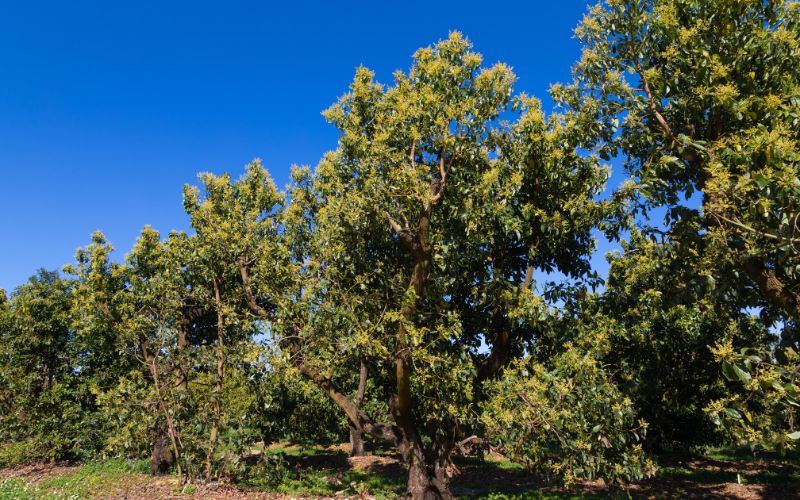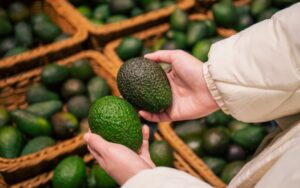Avocado trees, known for their delicious and nutritious fruits, are a popular choice among home gardeners and orchard enthusiasts. If you’re planning to grow an avocado tree, you might be wondering about the timeline for fruit production. So when does an avocado tree produce fruit?
In this article, we will explore How Long Does It Take for an Avocado Tree to Produce Fruit? and the factors influencing fruit production in avocado trees and provide you with valuable insights and tips on how to optimize the process. Let’s dive in and unlock the secrets to a fruitful avocado tree!
Understanding Avocado Trees
Avocado trees, scientifically known as Persea americana, are evergreen trees belonging to the Lauraceae family. Originating from Mexico and Central America, these tropical trees have become widely cultivated around the world. Avocado trees require a warm climate and well-drained soil to thrive.
How Long Does It Take for an Avocado Tree to Produce Fruit?
Factors Affecting Fruit Production
Several factors influence the time it takes for an avocado tree to bear fruit. Understanding these factors can help you manage your expectations and make informed decisions. The key factors include the tree’s age, variety, growing conditions, and the method used for tree propagation.
Avocado Tree Varieties and Their Fruiting Time
Avocado tree varieties exhibit variations in their fruiting times. The most popular and widely grown variety, the ‘Hass’ avocado, typically starts producing fruit within 2 to 3 years after planting. Other varieties may have longer fruiting times, ranging from 4 to 6 years or more. When selecting an avocado tree variety, consider the specific characteristics of each variety and its compatibility with your climate.
Growing Avocado Trees from Seed
Growing an avocado tree from seed is an exciting and rewarding experience. However, it’s important to note that trees grown from seed often take longer to bear fruit compared to grafted trees. If you choose to grow an avocado tree from seed, patience is key. On average, it can take anywhere from 5 to 13 years for a seed-grown avocado tree to start producing fruit. While this may seem like a long time, the process can be enjoyable and educational.

Growing Avocado Trees from Nursery-Bought Plants
Many home gardeners prefer to purchase avocado trees from nurseries. These nursery-bought plants are typically grafted, meaning they are a combination of two avocado tree varieties. Grafted avocado trees have a head start in fruit production compared to seed-grown trees. With proper care, a nursery-bought avocado tree can start producing fruit within 2 to 3 years, depending on the variety and growing conditions.
Accelerating Fruit Production: Tips and Techniques
If you’re eager to make your avocado tree bear fruit faster, there are several techniques you can try. While it’s impossible to rush nature’s timeline, certain practices can potentially expedite the fruiting process. Implementing the following methods may encourage earlier fruit production in your avocado tree:
- Pruning: Pruning plays a crucial role in shaping the tree and promoting fruiting. Regular pruning helps maintain the tree’s size, improves air circulation within the canopy, and stimulates the growth of new branches. By removing dead or overcrowded branches, you create a healthier and more productive tree.
- Optimal Growing Conditions: Providing the best possible growing conditions for your avocado tree can significantly impact fruit production. Ensure your tree receives ample sunlight, as avocados require at least 6 to 8 hours of direct sunlight daily. Additionally, maintain well-drained soil with a pH level between 6 and 7.5. Consistent watering and avoiding extreme temperature fluctuations are also essential.
- Pollination: Avocado trees have a unique flowering pattern where they produce both male and female flowers. However, they are not self-pollinating. To enhance pollination and increase the chances of fruit set, consider planting multiple avocado trees or utilizing grafting techniques to have different avocado varieties in close proximity. Bees and other pollinators can also aid in the pollination process.
- Proper Fertilization: Avocado trees require balanced nutrition to support healthy growth and fruit production. Apply a high-quality, slow-release fertilizer specifically formulated for avocado trees. Fertilize the tree at the beginning of the growing season and follow the recommended application rates. Avoid over-fertilization, as excessive nitrogen can lead to excessive vegetative growth at the expense of fruiting.
- Adequate Watering: Proper irrigation is essential for avocado tree health and fruit development. Avocado trees prefer consistent moisture, but overwatering can lead to root rot and other issues. Water the tree deeply and regularly, ensuring the soil is moist but not waterlogged. Consider using mulch around the base of the tree to conserve soil moisture and regulate temperature.
Optimal Growing Conditions for Avocado Trees
Creating the ideal environment for your avocado tree is crucial for healthy growth and fruit production. Avocado trees thrive in warm climates with temperatures between 60°F (15°C) and 85°F (29°C). They require well-drained soil with a pH level between 6 and 7.5.
Adequate sunlight is essential, so ensure your tree receives at least 6 to 8 hours of direct sunlight daily. Providing sufficient water and avoiding extreme temperature fluctuations are also important for the tree’s overall health.
Pruning and Maintenance for Fruit Production
Pruning plays a vital role in managing the size, shape, and overall productivity of avocado trees. Regular pruning helps maintain the tree’s vigor, promotes the growth of new branches, and enhances air circulation within the canopy.
This, in turn, can increase the chances of fruit production. Additionally, proper fertilization, irrigation, and pest control are essential aspects of avocado tree maintenance.

Signs of Fruit Development and Maturity
As an avocado tree matures and enters the fruiting stage, you will begin to notice several signs of fruit development. Small, green fruits will start to form, signaling the beginning of the fruiting process. As the fruits develop, some leaves may drop naturally to allow better light penetration.
Over time, the fruits will increase in size, gradually reaching their mature size. It’s important to be patient during this phase, as it can take several months for the fruits to fully ripen and become ready for harvest.
Harvesting Avocado Fruits
The timing of avocado fruit harvest depends on the variety and desired ripeness. Avocados are typically harvested when they reach their mature size and are still firm. The fruits will continue to ripen off the tree, so it’s best to harvest them slightly underripe. To determine if an avocado is ready for harvest, gently squeeze it; if it yields to pressure, it is likely ripe. Proper handling and storage are essential to ensure the best quality and flavor of harvested avocados.
Longevity of Avocado Trees
Avocado trees have the potential for a long lifespan if well cared for. While individual tree longevity can vary, with some trees living for 30 to 50 years or more, the average lifespan of an avocado tree is around 20 to 25 years. Proper pruning, maintenance, and disease prevention can help extend the productive life of your avocado tree.
Conclusion
Growing an avocado tree and enjoying the fruits it produces can be a gratifying endeavor. While avocado trees take time to mature and bear fruit, the wait is well worth it. Factors such as the tree’s variety, growing conditions, and propagation method influence the timeline for fruit production. By providing optimal care, being patient, and following proven techniques, you can increase the chances of your avocado tree producing a bountiful harvest year after year.




